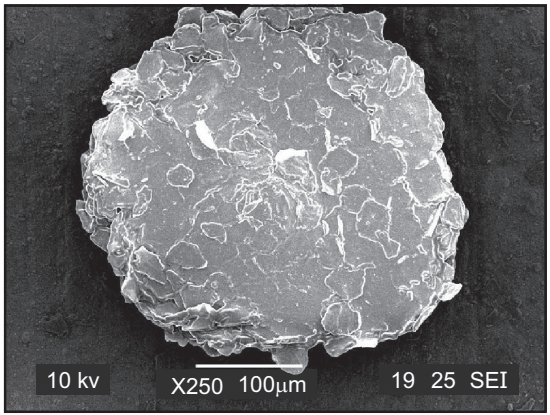The word dandruff (dandruff, dandriffe) is of Anglo-Saxon origin, a combination of ‘tan’ meaning ‘tetter’ and ‘drof’ meaning ‘dirty’. It is a common scalp disorder that involves the shedding of dead skin cells from the scalp. As skin cells die, a small amount of flaking is normal; about 5,00,000 cells/cm2 get released normally after detergent treatment. Some people, however, experience an unusually large amount of flaking up to 8,00,000 cells/cm2, either chronically or as a result of certain triggers, which can also be accompanied by redness, and itching. Many reports suggest a clear link between the two clinical entities – the mildest form of the clinical presentation of seborrhoeic dermatitis as dandruff, where the inflammation is minimal and remain subclinical. Conceptually, dandruff is the dander and represents nothing more than physiologic scaling. Hence it is believed that the physiological scaling process requires more cosmetic management. The response to treatment is commonly swift, but transient. On the contrary, seborrhoeic dermatitis is more inflammatory extending outside the limit of the scalp surface.
In seborrhoeic dermatitis redness and itching frequently occur around the folds of the nose and eyebrow areas, not just the scalp. Dry, thick, well-defined lesions consisting of large, silvery scales may be traced to the less common affliction of scalp psoriasis. Inflammation can be characterized by redness, heat, pain, swelling, and can cause sensitivity. Inflammation and extension of scaling outside the scalp exclude the diagnosis of dandruff from seborrhoeic dermatitis. Seasonal changes, stress, and immunosuppression seem to affect seborrhoeic dermatitis.
Both in dandruff and seborrhoeic dermatitis, the population of Malassezia is not uniform throughout the skin surface and inside the stratum corneum. Clumpy adherence of the yeast is seen in some corneocytes, whereas other corneocytes in the neighborhood region harbor few of this yeast. Malassezia globose, metabolizes the triglycerides present in sebum by the expression of lipase, resulting in a lipid byproduct oleic acid. During dandruff, the levels of Malassezia increase by 1.5 to 2 times their normal level. Penetration of oleic acid in the stratum corneum results in an inflammatory response in susceptible persons which disturbs homeostasis and results in erratic cleavage of stratum corneum cells.
Dandruff Composition
Table of Contents
Dandruff scale is a cluster of corneocytes, which have retained a large degree of cohesion with one another and detach as such from the surface of the stratum corneum (Fig.1).

The size and abundance of scales are heterogeneous from one site to another and over time. Parakeratotic cells (Parakeratosis is a mode of keratinization characterized by the retention of nuclei in the stratum corneum) often make up part of dandruff. Their numbers are related to the severity of the clinical manifestations, which may also be influenced by seborrhea. It has been well established that keratinocytes play a key role in the expression and generation of immunological reactions during dandruff formation. The severity of dandruff may fluctuate with season as it often worsens in winter.
Causes of Dandruff
Dandruff can have several causes, including dry skin, seborrhoeic dermatitis, not cleaning/scrubbing often enough, shampooing too often, psoriasis, eczema, sensitivity to hair care products, or a yeast-like fungus. Dry skin is the most common cause of flaking dandruff. As the epidermal layer continually replaces itself, cells are pushed outward where they eventually die and flake off. For most individuals, these flakes of skin are too small to be visible. However, certain conditions cause cell turnover to be unusually rapid, especially in the scalp. It is hypothesized that for people with dandruff, skin cells may mature and be shed in 2–7 days, as opposed to around a month in people without dandruff. The result is that dead skin cells are shed in large, oily clumps, which appear as white or grayish patches on the scalp, skin, and clothes.
According to one study, dandruff has been shown to possibly be the result of three factors:
- Skin oil is commonly referred to as sebum or sebaceous secretions.
- The metabolic by-products of skin micro-organisms (most specifically Malassezia yeast).
- Individual susceptibility and allergy sensitivity.
Treatment of Dandruff
Dandruff can almost always be controlled, but dandruff treatment may take some trial and error. In general, daily cleansing with a gentle shampoo to reduce oiliness and skin cell buildup can often help mild dandruff. When regular shampoos fail, dandruff shampoos may be used judiciously. If an individual develops itching, stinging, redness, or burning from any product, stop using it. If one develops an allergic reaction — such as a rash, hives, or difficulty in breathing, immediate medical attention must be sought.
Dandruff shampoos are classified according to the medication they contain:
Pyrithione zinc shampoos (e.g. Head & Shoulders, Jason Dandruff Relief 2 in 1): These contain the antibacterial and antifungal agent zinc pyrithione that can reduce the fungus on the scalp that can cause dandruff and seborrheic dermatitis.
Tar-based shampoos (e.g. Neutrogena T/Gel): Coal tar, a byproduct of the coal manufacturing process, helps conditions such as dandruff, seborrheic dermatitis, and psoriasis. Coal tar causes the skin to shed dead cells from the top layer and slows skin cell growth. If you have light-colored hair, this type of shampoo may cause discoloration.
Shampoos containing salicylic acid (e.g. Neutrogena T/Sal): These “scalp scrubs” help to eliminate scale, but they may leave your scalp dry, leading to more flaking. Using a conditioner after shampooing can help to relieve dryness.
Selenium sulfide shampoos (e.g. Selsun Blue): These shampoos slow your skin cells from dying and may also reduce Malassezia. Because they can discolor blond, gray, or chemically colored hair, use them only as directed, and rinse well after shampooing.
Ketoconazole shampoos (e.g. Nizoral): Ketoconazole is a broad spectrum, an antimycotic agent that is active against Candida and M. furfur. Of all the imidazoles, ketoconazole has become the leading contender among treatment options because of its effectiveness in treating seborrheic dermatitis as well. It is available over the counter as well as by prescription.
Usage
Try using one of these shampoos daily or every other day until dandruff is controlled; then cut back to two or three times a week, as needed. If one type of shampoo works for a time and then seems to lose its effectiveness, try alternating between two types of dandruff shampoos. The instructions on the bottle should be carefully read. Some need to be left on for a few minutes, while others should be immediately rinsed off. If after regular use of anti-dandruff shampoo for several weeks, dandruff persists dermatologists must be consulted. One may need a prescription-strength shampoo or treatment with a steroid lotion.
Alternative Medicine
Studies have reported that tea tree oil can reduce dandruff. Tea tree oil, obtained from the leaves of the Australian tea tree (Melaleuca alternifolia), has been used for centuries as an antiseptic, antibiotic and antifungal agent. It is now included in several shampoos found in natural foods stores. The oil may cause allergic reactions in some people.
Make sure you also check our other amazing Article on : Wrinkles
